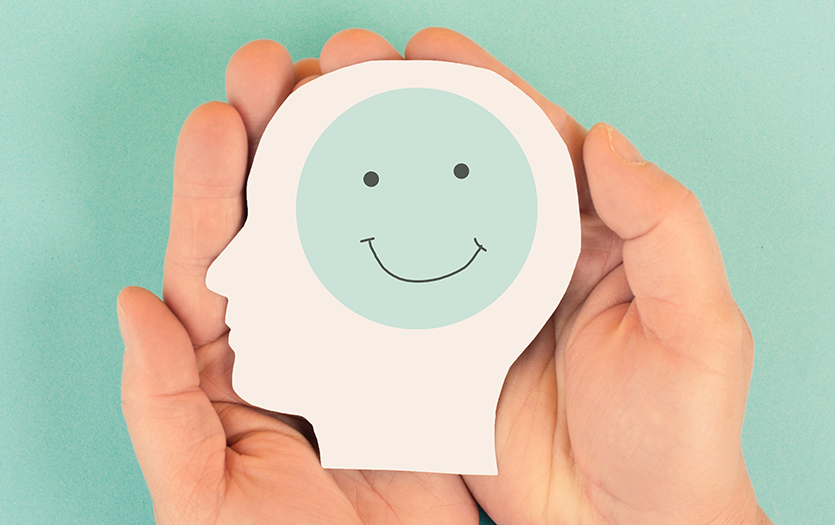
This post was written by Laura Oyer, PhD, HSPP Licensed Psychologist, Parkview Behavioral Health Institute.
I’m so stressed. I’m so anxious. My brain won’t stop thinking. These are just a few phrases I hear, both from clients and loved ones when they are describing their experience of stress and anxiety. One thing I have found helpful for myself and others is to better understand what is going on with our mind and body during this time, so we can be less fearful, appreciate what our body is doing and also help regulate it.
What is stress and anxiety?
Stress occurs when we are in a relationship with something (real or imagined) that is causing us tension, pressure or resistance. To illustrate what this means, think about putting your hands together in a prayer posture. If you gently push both hands together, there is stress there, but there is an equal amount of resistance from both sides so it feels okay; the muscles in both arms tighten and you could likely hold this for some time, as long as the resistance eventually stops. This is what our bodies do when there is a stressor; our muscles tense to help us tolerate the experience, ready to act and support us.
But what happens if one arm is not strong enough and the pressure is too much? Picture that same prayer posture but imagine one arm is not as strong and the other hand pushes it, and it moves. This is how I think about anxiety. Anxiety is a state, real or imagined, when we cannot (or worry we cannot) tolerate the stress that is on us. These thoughts often add more tightness to our already tense bodies and the cycle of stress and anxiety continues. When our stress doesn’t reduce, we often turn towards maladaptive ways to regulate, numb or check out, such as addictions (e.g., substances, work, eating, over-exercising, co-dependent relationships).
What can we do to reduce stress and anxiety?
How do we shift this pattern? One of the most helpful things I’ve learned, and that I teach others, is understanding what my body is actually doing in a stressful, high-anxiety situation and then seeing that reaction as my body trying to protect me and keep me safe.
Our bodies have something called the autonomic nervous system and it’s constantly looking for safety and threats in our environments (and inside our bodies!). So, imagine you get a text from a friend or partner that says, “We need to talk.” For many, this would be considered a stressor; our body might start to feel tense, our heart beats faster, our mind speeds up, our chest tightens – we are in a state of stress. Let’s use this example to consider a few practical ways to respond.
Take a few deep breaths, making your exhale longer than your inhale.
This easy exercise tells your body and brain that there is no immediate threat. Think about this – if you were in actual danger, like being chased by a bear, you are going to breathe in and out quickly. You wouldn’t stop to try to slow your breathing down. But breathing long exhales activates the parasympathetic side of the nervous system (the rest and digest side) and it helps to slow things down. This action tells your brain and body that you are okay. This might take a few minutes, but it’s a great first step.
Thank your body.
Another strategy to manage anxiety is to acknowledge that my body is doing exactly what it needs to do, detecting a possible threat or danger. In our example scenario, abandonment and rejection are real stressors, so it makes sense our bodies would react in this way. Instead of adding more worry about what your body is doing, start by telling your body, “Thank you for keeping me safe. Thank you for caring about my relationships so much that this feels scary. Right now, we are okay.” Seeing your body’s response for what it is and not something to be immediately stopped, shut down, or turned off helps your body ride this energetic wave and get to the other side. We don’t have to rush it although sometimes this is uncomfortable, and we’d like it to pass faster. Our bodies are wise and know how to get through this and return to a state of calm, we just need to let them.
Reframe your thoughts with kindness.
Notice the flavor of your thoughts and respond to them with kindness. Sometimes, it’s easier to think about an external example, and then translate that to us. With my own kids, I like to start with a validating statement “It makes sense you feel [insert feeling word] because...” and then say something that might bring comfort, “...you are not alone. I’m right here with you. We are safe.” So, in the example above, we might tell ourselves, “It makes sense I’m anxious because I care for this person and want closeness and connection. Even if there’s conflict between us, I will be okay because I have friends, family, God, etc. who love me and are there for me.”
Use your five senses to calm and regulate.
Just like a baby, adolescents and adults can also use their body to calm. Think about the ways we calm babies: we swaddle and hug them (give them physical containment), talk or sing to them (provide sound frequencies that send messages to them they are safe), use bilateral movement (walking, swaying, rocking), give them something soft like a blanket or stuffy (tactile comfort), give them milk or food (taste and smell to comfort). All these things we can do for ourselves. Here are a few adult ways to regulate.
- Touch: weighted blanket, massage, heating pad, going for a walk, dancing/shaking the body, getting a long hug, snuggling with a pet
- Sound: listening to music with frequencies that are not too high or low (Disney music has a lot of these tones in them), listening to rhythmic beats that are slower and calming, hearing nature sounds
- Smell: this one is unique to a lot of people, but using candles, essential oils and scents from nature can be calming
- Taste: this is also unique to each person, but sometimes warm tea or food can be comforting
- Sight: being in nature/looking at nature scenes, looking at loved ones in person or in pictures, closing eyes and imagining times of joy, connection and love, reading a real book (this helps our eyes go back and forth and can be calming for some, activating parts of the nervous system that help calm)
Learning to calm and regulate your mind and body is a journey and what works for one person might be different than the next person. Keeping a log of times of stress and anxiety and what was helpful to tolerate and “ride the wave” can be useful so you can return to these tools as you need them.
If you or a loved one notices using skills like these is not enough to manage stress or anxiety, consider reaching out to the Parkview Behavioral Health Institute for further support. Call us at 260-481-2700 to schedule an assessment.



